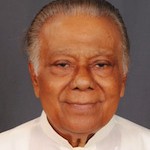A Brief Colonial History Of Ceylon(SriLanka)
Sri Lanka: One Island Two Nations
A Brief Colonial History Of Ceylon(SriLanka)
Sri Lanka: One Island Two Nations
(Full Story)
Search This Blog
Back to 500BC.
==========================
Thiranjala Weerasinghe sj.- One Island Two Nations
?????????????????????????????????????????????????Wednesday, August 31, 2016
SRI LANKA’S TRANSITIONAL MOMENT AND TRANSITIONAL JUSTICE – RUKI FERNANDO
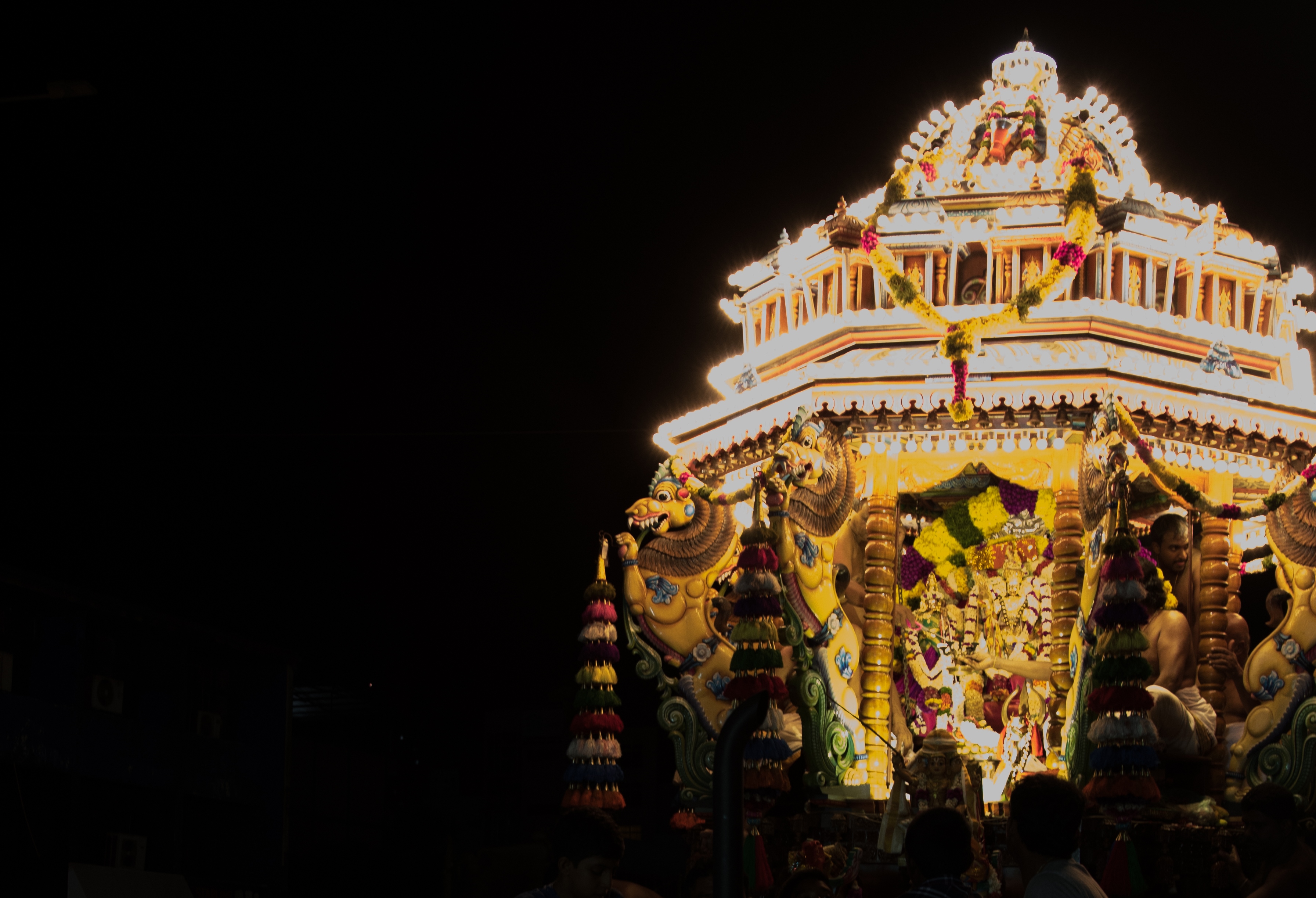
(Light among the darkness: Hindu religious festival in Colombo July 2015 ©s.deshapriya)
Within the first month after winning the parliamentary elections in
August 2015, the new Government made a series of commitments related to
transitional justice. These were articulated through a speech by the
Foreign Minister at the 30th session of the UN Human Rights Council.[1] These
commitments were also reflected in the resolution on Sri Lanka that was
adopted by the Human Rights Council on 1 October 2015.[2] The
resolution came just after the UN High Commissioner for Human Rights
had published a report which alleged war crimes and crimes against
humanity and other serious violations of international human rights and
humanitarian laws, by both the Sri Lankan government and the LTTE.[3]
Government’s commitments
The present Government’s commitments included setting up an Office of
Missing Persons (OMP), a Commission for Truth, Justice, and Guarantees
of Non-reoccurrence, a Judicial mechanism with Special Counsel, which
will have the participation of foreign judges, prosecutors,
investigators and defence lawyers, and an Office for Reparations. The
Government also committed to reduce the military’s role in civilian
affairs, facilitate livelihoods, repeal and reform the Prevention of
Terrorism Act (PTA), criminalise disappearances, ratify the Enforced
Disappearance Convention[4] ,
review the victim and witness protection law, and range of other
actions. Consultations to seek people’s views on transitional justice is
underway across the country, under the leadership of some civil society
activists.
The Enforced Disappearance Convention was ratified in May this year and
the draft Bill to create the OMP was passed by Parliament on 11 August.
There are positive features as well as weaknesses and ambiguities in the
Bill[5].
Due to a history of failed initiatives, the minimal ‘consultations’
that occurred during drafting process and the lack of information on
details, there appears to be very little confidence in the OMP amongst
families of the disappeared. This is likely to be the case for other
mechanisms, unless there’s a drastic change in approach from the
government.
Reactions to transitional justice within Sri Lanka
Currently, the transitional justice agenda appears to be polarising Sri
Lankan society. Opinion polls, and my own impressions, indicate that the
Tamil community, particularly in the North and the East, who bore the
brunt of the war, appears to favour strong international involvement.
But the majority Sinhalese community appears to reject international
involvement. Varying opinions have been expressed about forgetting the
past, memorialisation, prosecutions, and amnesty. There are also
different or contradictory opinions and expectations within each ethnic
community and amongst survivors of violations and families of victims.
The Government’s transitional justice commitments have been criticised
by the former President and his supporters. Even the release of a few
political prisoners, the release of small amounts of land occupied by
the military, and the establishment of the OMP to find truth about
missing persons have been framed as an international conspiracy that
endangers national security and seeks revenge from “war heroes”.
There does not appear to be an official Government policy document on
transitional justice. The Government’s commitments have only been
officially articulated in Geneva by the Foreign Minister and not in Sri
Lanka . The Foreign Minister has been the regular advocate and defender
of these commitments. Some of the meetings with local activists have
been convened by him and the Secretariat for Co-ordinating
Reconciliation Mechanisms (SCRM) is housed in the Foreign Ministry. All
these contribute to the process being seen as emanating and driven by
foreign pressure. Outreach on the Government’s transitional justice
plans appears to focus on the international community and not towards
Sri Lankan people.
The President and Prime Minister have not been championing the
Government’s official commitments. For example, the duo have publicly
stated that the commitment to have foreign judges in the judicial
mechanism will not be fulfilled. Even this has not satisfied the critics
alleging foreign conspiracy, and has disappointed some activists,
especially Tamils, as well as survivors and victims’ families.
Developments on the ground
Monuments erected to honour the Sinhalese dominated military during the
Rajapakse time continue to dominate the Tamil majority Northern
landscape. Army camps that were built over some of the cemeteries of
former LTTE cadres that were bulldozed by the Army after the war are
still there. The loved ones of those whose remains were in these
cemeteries have no place to grieve, lay flowers, light a candle, or say a
prayer. While the numbers have reduced from those under the Rajapaske
regime, intimidation and reprisals on families, attacks, and threats and
intimidation of activists and journalists continue to occur. Limited
progress on issues, such as the release of political prisoners, land
occupied by military, continuing military involvement in civilian
affairs in the North and East, reports of continuing abductions, and
arrests under the PTA have raised doubts about the Government’s
commitments.
Although a few military personnel have been convicted and some others
arrested on allegations of human rights abuses, the lack of progress in
thousands of other cases only reinforces calls for international
involvement for justice.
Towards Rights & Democratization beyond Transitional Justice framework
Unemployment, debt, and sexual and gender-based violence is widespread
in the former war ravaged areas. The new Government’s economic and
development policies are focusing on trade, investment, and mega
development projects, which privilege the rich and marginalise the poor.
Pre-war rights issues, such as landlessness, sexual and gender-based
violence and discrimination, caste, rights of workers, including those
working on tea estates, still need to be addressed.
A consultation process towards a new constitution drew a large number of
public representations, dealing with many of the issues mentioned
above. But the next steps are not clear, particularly in finding
political solutions to the grievances of the country’s ethnic
minorities.
The political leadership will have to reach out to all Sri Lankans,
especially to the Sinhalese majority, about its reform agenda, while
taking principled actions to win the confidence of numerical minorities
such as Tamils and Muslims. At the national level, the coming together
of the two major political parties and support of the two major parties
representing Tamils and Muslims, makes this a unique opportunity to push
towards radical reforms.
It will also be a challenge to go beyond a conventional transitional
justice framework and use the transitional moment to move towards
reconciliation, democratisation, and sustainable development, by
addressing civil and political rights as well as economic, social, and
cultural rights in a holistic manner, considering the yearnings of war
survivors, victims’ families, and the poor, for truth, reparations,
criminal accountability, and economic justice.
[1] Speech by Hon Mangala Samaraweera at the 30th session of the Human Rights Council, Geneva, 14 September 2015.
[2] Human
Rights Council Resolution, Promoting reconciliation, accountability,
and human rights in Sri Lanka, 14 October 2015, UN Doc. A/HRC/RES/30/1
(adopted 1 October 2015).
[3] Human
Rights Council, Report of the OHCHR Investigation on Sri Lanka (OISL),
thirtieth session, 16 September 2015, UN Doc. A/HRC/30/CRP.2.
[4] International
Convention for the Protection of All Persons from Enforced
Disappearance, adopted 20 December 2006, UN Doc. A/61/488 (entered into
force 23 December 2010) (“Enforced Disappearance Convention”).
[5] For more on OMP, see http://thewire.in/42687/sri-lankas-disappeared-will-the-latest-missing-persons-office-bring-answers/
( First published in Inform news letter)
Govt. fast tracks the superstructure reform p
rocess

by Jehan Perera-August 29, 2016
 The
constitutional reform process moving forward rapidly, though without a
high level of publicity, indicates that the government leadership has a
businesslike approach to political reform. It is reported that four of
the six subcommittees who were given different areas of constitutional
reform to deal with have handed in their reports to the steering
committee on constitutional reform headed by Prime Minister Ranil
Wickremesinghe, which is responsible for producing the draft
constitution. The subcommittees are on Fundamental Rights, Judiciary,
Law and Order, Centre Periphery Relations, Public Finance and the Nature
of the State. The government appears to be making the best use of the
opportunity that has presented itself in the form of the government of
national unity, which gives it a 2/3 majority in Parliament, capable of
getting even controversial legislation through. Some of the
constitutional reforms will be controversial, especially those
provisions that relate to the ethnic conflict. The absence of fanfare
may be because the government prefers to get those through the
parliamentary hurdle first before taking them to the people.
The
constitutional reform process moving forward rapidly, though without a
high level of publicity, indicates that the government leadership has a
businesslike approach to political reform. It is reported that four of
the six subcommittees who were given different areas of constitutional
reform to deal with have handed in their reports to the steering
committee on constitutional reform headed by Prime Minister Ranil
Wickremesinghe, which is responsible for producing the draft
constitution. The subcommittees are on Fundamental Rights, Judiciary,
Law and Order, Centre Periphery Relations, Public Finance and the Nature
of the State. The government appears to be making the best use of the
opportunity that has presented itself in the form of the government of
national unity, which gives it a 2/3 majority in Parliament, capable of
getting even controversial legislation through. Some of the
constitutional reforms will be controversial, especially those
provisions that relate to the ethnic conflict. The absence of fanfare
may be because the government prefers to get those through the
parliamentary hurdle first before taking them to the people.
The unique opportunity that has presented itself in terms of
constitutional reform is the existence of a government of national unity
that is formed by the partnership of the two major political parties,
the UNP and SLFP, which have hitherto always been on opposing sides of
the political divide. Never before have these two parties formed a
government together. One has always been in opposition to the other.
This has also meant that whenever a government led by one them tried to
come up with constitutional reforms or a political solution to the
ethnic conflict, the other party in opposition always tried to undermine
what the government was trying to do. Thus, both the 1972 and 1978
constitutions were essentially creations of one party, which those
governments bulldozed into law without the support of either the major
opposition party or the ethnic minority parties.
The inability of previous constitutional reform efforts to obtain a
bipartisan consensus, let alone a consensus that included the ethnic
minorities, was a fatal flaw that had catastrophic consequences to
inter-ethnic relations and eventually led to protracted civil war. On
this occasion, however, the government comprises both the UNP and SLFP
which has a large voter base that supports them politically. The
political support given to the government by the ethnic and religious
minorities at the last elections has also created a political obligation
on the part of the government to take their interests into account in
fashioning the constitutional reforms. Although the SLFP is for all
practical purposes divided, the official part of the SLFP is headed by
President Maithripala Sirisena, who is giving increasingly forceful
leadership to his more liberal faction of the SLFP.
NO FANFARE
However, the division in the SLFP means that a substantial number of MPs
and local level politicians are supporting the nationalist faction led
by former President Mahinda Rajapaksa. The existence of a nationalist
Sinhalese opposition to the government in the form of the Rajapaksa
faction of the SLFP appears to have pressed the government to steer
clear of engaging in mass politics regarding the legislative reforms at
this time. The government may be concerned that if the issues of
constitutional reform or the reconciliation mechanisms are canvassed too
strongly with the general population at this time, the nationalism that
exists within the country, and in all its communities in competing
ways, will lead to a rising tide of opposition from below which could
influence, or even include the members of the official SLFP. This may
explain why the government is proceeding with constitutional reform
without much fanfare or engaging in mass politics on it.
This same pattern can be seen in the case of the reconciliation process.
The government’s passage of the Office of Missing Persons Act (OMP)
through parliament was achieved at top speed that has now become a
problem as several legitimate amendments proposed by the opposition were
neither discussed nor voted upon. The government has itself admitted
that amendments proposed by the JVP, which is a party that itself caused
and suffered from disappearances in the era of its insurrection in the
late 1980s and early 1990s, were missed in the melee in parliament on
the day that the OMP bill was taken up for debate and rushed through to
ratification. The law regarding the OMP has also been criticized by
civil society groups for the reason that it has not been prepared in
consultation with victim groups and the civil society organizations that
have tried to sustain them.
In the case of both the constitutional reforms and the reconciliation
processes the government has shown it is interested in pursuing public
consultations but on a limited scale by civil society organizations
which have emerged as trusted intermediaries. The insights from this
process of consultation have been useful and are being incorporated in
the final drafts that the government is preparing for the new
constitution. But it does not take the message of what the government is
trying to do to the larger population. The government appears to be
keeping that for a later phase when it will have to actually champion
the reforms it is currently undertaking to win the hearts and minds of
the people. At the present time the general population remain more or
less as passive observers with regard to the two most important
political processes underway in the country without knowing too many of
the details as to what is happening in the country and why.
CIVIL SOCIETY
On the other hand, the political championing the reform process will
necessarily have to take place at the time a referendum on the
constitutional changes is called for by the Supreme Court. If there is
to be a political solution to the ethnic conflict, which is the long
unresolved and festering sore in the body politic, it is very likely
that it will entail a referendum as such a solution will include some
major changes to the constitution. At that point the government will
need to go all out to win the referendum. Losing a referendum on
constitutional change will have catastrophic consequences to the
government and to the polity itself on a scale that exceeds the Brexit
reversal in the UK. In the UK the prime minister felt obliged to resign
but the UK is under the same ruling party that is negotiating its exit
from the EU. However, if a referendum is lost in Sri Lanka, the
government’s mandate to govern will itself be eroded, rival nationalisms
will take the upper hand and ethnic relations will be sundered.
At the beginning of this year, the government provided civil society
with an opportunity to get involved in the constitutional reform process
by appointing a Public Representations Committee which was expected to
go round the country and gather the views of the people on the main
issues that require constitutional change. The PRC submitted its report
about three months ago in May to the Prime Minister who is chairing the
steering committee of the constitutional drafting process. The
government also gave civil society a similar opportunity to play an
intermediary role when it appointed the Consultation Task Force to
ascertain the views of the general public on the reconciliation
mechanisms it has proposed. This body has submitted an interim report on
the first of the reconciliation mechanisms, the Office of Missing
Persons, and is likely to submit the full report which includes the
other three reconciliation mechanisms soon.
In the interim period civil society organizations that focus on peace
building, human rights and good governance are seeking to influence the
drafting of the legislation relating to constitutional reform and the
reconciliation mechanisms in order to improve them. Civil society needs
to also engage in an awareness creation and education campaign with its
own networks of partners at the community and grassroots levels. Such a
course of action will ensure that a network of conscientised opinion
formers will be available in all parts of the country to give their
support to the government’s campaign when it has to face the referendum
on constitutional reform and implement the reconciliation mechanisms
that it has passed into law. The changes in the superstructure of laws
and institutions need to be accompanied by corresponding changes in the
attitudes of the general population whose thinking has been conditioned
by decades of nationalism, over centralization of power and focus on
national security-centered policies which were justified as necessary in
a time of war.
A New Truth Commission for Sri Lanka: Lessons from Other Models
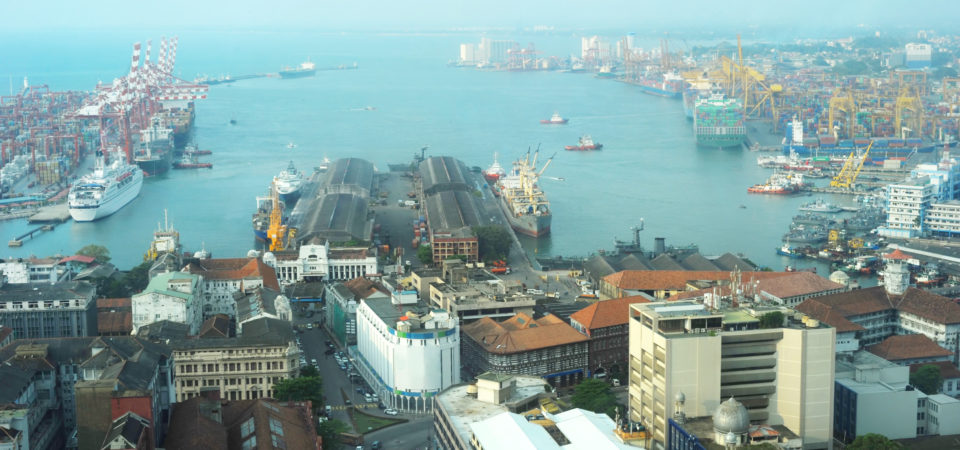
August 26, 2016
Written by Akshan de Alwis, UN Correspondent
 William Blackstone, perhaps the most influential jurist in Western legal thought, claimed in his 18th century magnum opus Commentaries on the Laws of Englandthat
“It is a settled and invariable principle in the laws of England, that
every right when with-held must have a remedy, and every injury its
proper redress.” Providing remedy for infringed-upon human rights has
become one of the fundamental means of realizing the massive framework
of human rights developed over the past century. From this goal of
redressing violations has arose a novel perspective of justice –
transitional justice.
William Blackstone, perhaps the most influential jurist in Western legal thought, claimed in his 18th century magnum opus Commentaries on the Laws of Englandthat
“It is a settled and invariable principle in the laws of England, that
every right when with-held must have a remedy, and every injury its
proper redress.” Providing remedy for infringed-upon human rights has
become one of the fundamental means of realizing the massive framework
of human rights developed over the past century. From this goal of
redressing violations has arose a novel perspective of justice –
transitional justice.
Transitional justice is a broad and amorphous term; it covers far too
many concepts and ideals to be fairly surmised in a single essay, let
alone a paragraph. Under the umbrella term of transitional justice range
the Nuremburg and Tokyo Trials to an annual prayer ceremony in Northern
Uganda as equally legitimate forms of post-conflict justice.
Nonetheless – from the numerous disparate definitions and
materializations of transitional justice – a basic binding thread
between the various visions can be found: the question of, as noted by
Priscilla Hayner, “how to reckon with massive past crimes and abuses?”
In the realm of traditional jurisprudence, this question is
self-evident: crimes are addressed by criminal justice. However, in the
case of many transitioning states, the criteria for a stringent criminal
justice system can rarely be met in dealing with the legacy of human
rights abuses. The rules of evidence may be impossible to meet,
witnesses may not be willing to testify in an adversarial system, and
the political situation may not allow for a truly free and independent
trial. The nascent norm of transitional justice attempts to address
these roadblocks with a litany of tools for a diverse set of demands and
circumstances. Memorialization, reparations, lustration, and
commissions of inquiry are some of the many manifestations of
transitional justice. But the dominating force in transitional justice
is that of the truth commission, which has become the international
community’s cure-all for transitioning states.
While the initial batch of truth commission experiences were middling,
by increasing the disciplinary scope of the process, a more robust and
successful model has precipitated over the last decade. Instead of
thinking of a truth commission as a salve or a temporary measure to heal
an injured body politic, the modern truth commission sees
reconciliation, truth-building, and societal reconstruction as a
constantly ongoing process. The mandate of transitional justice is never
truly over: the phantom pain of conflict can never fully be healed;
even generations later, the scars of conflict will remain.
Given these seemingly endless complexities and near-impossible mandate,
what can a truth commission hope to achieve? To answer this question
requires an understanding of the evolution of the truth commission. By
examining the width and breath of truth commissions, a holistic vision
of a truth commission can be developed that eschews easy description and
instead realizes the multidisciplinary potential of transitional
justice.
While the Nuremberg Trials are perhaps the first example of transitional
justice, they bare as much resemblance to the modern truth commission
as fish to man. Despite the claims that war crimes tribunals, truth
commissions, and commissions of inquiry are all Western constructs
designed to suppress the developing world, the first truth commissions
emerged out of the “global south.” The progenitors of the truth
commission were not a result of Western pressure, but instead of
incalculable grief in developing nations emerging from conflict. The
first official truth commission was in Bolivia, but it would take
Argentina in 1984 to pioneer the truth commission with the Nunca Más
(Never Again/No More) report. Just the name of the report itself
highlights the visceral anguish that the first truth commission
attempted to mitigate. While not necessarily truth commissions in name,
inquiries into previous war crimes were undertaken in Uganda, Zimbabwe,
Guatemala, El Salvador, Nepal, and the Philippines.
The Rettig Report, officially known as the National Commission for Truth
and Reconciliation Report in Chile, was the first of these kind of
bodies to formally adopt the language of “truth and reconciliation.” But
the climactic development point for the truth commission is most
definitely that of South Africa’s Truth and Reconciliation Commission
(TRC).
Although it may have formally appealed to Western concepts of human
rights, the TRC deployed an organic model of state, culture and society.
Drawing on Plato’s views of society, the body politic is viewed through
general principles of organicism, holism, and collectivism in which it
is the purpose of the individual to maintain social harmony and the
health of the state. This perspective is exemplified in the writings of
TRC Chair, Desmond Tutu. In justifying the controversial amnesty
legislation, which enabled the commission to grant amnesty to
perpetrators, Tutu writes:
Social harmony is for us the summum bonum – the greatest good.
Anything that subverts or undermines this sought-after good is to be
avoided like the plague. Anger, resentment, lust for revenge[…] are
corrosive of this good.
The main metaphor of the organic state is society as a sick body that is
in need of healing. The TRC carried out this healing and thus promoted
national reconciliation. Metaphorically phrased, the TRC opened the
wounds of the suffering nation and cleansed them, thus healing the
national body politic. The morality of the nation-state becomes a
question of Platonic moral and political hygiene. Here, the focus is not
as much on individuals, but on the nation-state. Reconciliation between
individuals in the sense of victim–offender mediation was not attempted
in South Africa; sub-national social groups such as classes, races or
genders are not to be reconciled with one another either. Instead, the
reconciliation proposed by the TRC works at a much higher level of
abstraction. The nation-state is to be reconciled with itself.
Ultimately, the TRC is but another tool to respond to the classic
Weberian problematic of state legitimacy.
But South Africa’s truth commission served a vital tool. It was the
standard model to which each subsequent truth commission was held to,
allowing for transitioning societies to fork their own vision of
transitional justice. It became a platform for a vibrant and diverse set
of transitional justice forms, each suited for the individual situation
of each nation. The modern truth commission does what South Africa did
not: focus on the individual, vulnerable groups, and rich narratives
that refused to bend to politics.
Nowhere is this modern truth commission perspective more visible than in
Timor-Leste. Reeling from years of Indonesian occupation, the Timor
Leste developed a Commission for Reception, Truth and Reconciliation
with the help of the United Nations. Its main work in East Timor was to
carry out Community Reconciliation Procedures (CRPs) in every district,
with the aim of reintegrating low level offenders. The framework chosen
to shape these meetings was the adat (customary law) ceremony called “biti bot”
or “unrolling of the mat.” The mat is laid out in a public space and
the occasion is dignified by the display of sacred heirloom objects. The
meeting is presided over by elders and spiritual leaders, who arrive
dressed in ceremonial attire of traditional textiles, silver
breastplates and headdresses of feathers or silver horns. They open the
proceedings by chanting ritual verses, then take their places and share
betel-nut – a gesture symbolic of good relations all over South-East
Asia. The participants arrange themselves around the four sides of the
mat, with the CRP panel on one side, facing the community members, and
the deponents and victims to the panel’s left and right respectively.
The hearing requires a full admission and apology in the presence of the
community. The victim confronts the perpetrator, is entitled to
question them closely and must eventually say what will help them feel
better. Perpetrators must then undertake redress as directed.
While the success of truth commissions cannot be quantified,
international observers from all over the world have heralded East
Timor’s quasi-legal efforts as ground-breaking. Ultimately, the truth
commission exceeded its planned goal of hearing 1000 cases. By the end,
it had received a total of 1541 statements from deponents requesting to
participate.
Thus the modern truth commission is not bound by the Western legal
legacy – the words of Blackstone and Plato no longer play into the
mandate of transitional justice. Instead, what is the centerpiece of a
truth commission is the nation itself. The truth commission incorporates
and fuses community. By internalizing the unique facets of a conflict,
the truth commission can be molded into an institutional structure that
can provide for generations. Think not of the truth commission as some
sort of probe, an inflexible tool wielded by the West to humiliate the
developing world. Instead, the truth commission is a malleable mechanism
of empowerment, aimed at integrating into a nation and providing
something – whether it be truth, reconciliation, or respect – which has
yet to be provided through normal means.
Sri Lanka’s latest efforts to set up a TRC provides ample opportunity to
learn from other models. When Maithripala Sirisena surprisingly won the
presidency in 2015, ushering in a unity government with Ranil
Wickremesinghe as Prime Minister, Sri Lanka was poised to enter a new,
forward-looking era. It seemed possible that the myopic politics of
Mahinda Rajapaksa were a thing of the past. This hope was compounded by
Sri Lanka’s sponsoring of UN Human Rights Council Resolution 30/1, which
called for a credible judicial mechanism to investigate alleged human
rights abuses during the end of the civil war.
With the tabling of Resolution 30/1, the Sri Lankan government devised a
four part plan to ensure accountability: a truth commission,
reparations and missing persons offices, and, most importantly, an
independent special court for war crimes with international oversight.
Out of these four mechanisms, the government has publicly announced
progress in the Office on Missing Persons (OMP). The government has
promised that the truth commission will be launched by the end of the
year. The OMP still needs to be approved by Parliament.
During a recent visit to Sri Lanka, I met some of the talented and
passionate stakeholders working with the government to catalyze the
transitional justice process. It was clear that one of the most
important ways to accelerate the establishment of the TRC and to win
public support for it is to transform the way in which the local
communities perceive TRC. The key then is to focus on the political
messaging: framing transitional justice in a way that transcends
partisan politics, and positions it as a solution to larger problems of
national exceptionalism.
Last year, Foreign Minister Mangala Samarawera told the press that Sri
Lanka’s TRC was to be modeled after South Africa’s 1996 TRC. One
important lesson to be learnt from South Africa’s TRC is the way in
which it cultivated positive media attention. There are few transitional
justice efforts that have so effectively captured the national
imaginational as the South African TRC. Each and every step seemed
designed to make the biggest splash: from the appointment of
high-profile members like Archbishop Desmond Tutu to the regularly
televised broadcasts of “Truth Commission Special Report” each Sunday.
The political leaders behind South Africa’s TRC understood the necessity
of public support, and made a number of decisions to ensure media and
public engagement.
While the Sri Lankan government’s effort to adopt a flexible, home-grown
model used by more recent truth commissions will help to create a sense
of national ownership of the process, communicating a clear and
powerful narrative of transitional justice to the public will increase
its national credibility and international stature.
About the Author: Akshan de Alwis is the UN Correspondent for the Diplomatic Courier.
Jaffna GA's letters cause anger among uprooted Tamils from Valikaamam North
[TamilNet, Monday, 29 August 2016, 23:31 GMT]
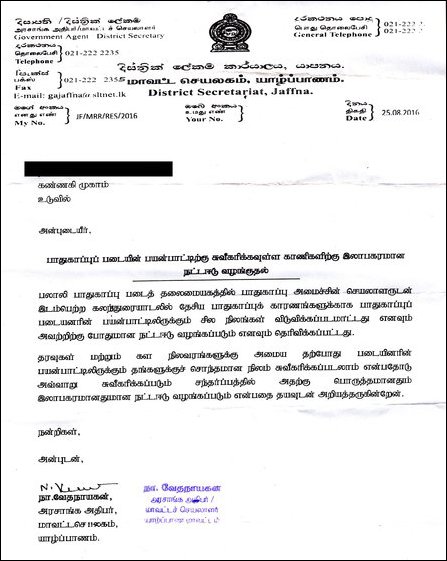

Occupying Colombo's Defence Ministry has instructed the SL Government Agent in Jaffna, Mr N. Vethanayagan to issue three different letters to the uprooted families in Valikaamam North, who are staying in the so-called welfare camps in Jaffna. A section of the people have been asked to prepare to move out of their camps and to accept alternative housing-scheme [being built by the occupying military]. Around 70 of the families staying at Sabapathipillai camp in Chunnaakam have received a second-type of letter that states that in the event their lands were to be permanently seized for military use, they would be compensated with ‘suitable’ and ‘lucrative’ alternatives. A third one asks the remaining to stay calm and wait for resettlement until the end of 2017. The letters have caused confusion and anger among the uprooted people who have been staying in the camps for more than 25 years.
The move indicates that the SL military is not prepared to release the fertile lands it has appropriated from the people of Valikaamam North, say the representatives of uprooted Tamils from Valikaamam North.
Informed sources at Jaffna District Secretariat told TamilNet that the GA was reluctant to issue such letters. But, he was instructed to do so after the insistance coming from Colombo after a ‘high-level’ decision made by the SL Defence Ministry and the SL President Maithiripala Sirisena.
Currently, 1,030 families uprooted from Valikaamam North are residing in 31 so-called welfare camps in Jaffna. Most of them are poverty-stricken.
There are more than 54,000 uprooted Tamils who reside outside these camps. They have not received any letters.
The SL Military is trying to exert pressure on the poverty stricken families residing in the camps to accept alternative solutions in order to permanently seize their villages.
Security Can Coexist With Human Rights
I felt sad to learn from the media that thousands who were displaced by
the civil war were still roughing it out in refugee camps, waiting for
their native lands to be released by the Army. According to the
newspapers thirty one welfare camps are situated in seven Divisional
Secretariats of the Jaffna District, housing 936 families, comprising
3,260 people.
The news took my memory back to 1997, when I visited the Poonthottam
Camp in Vavuniya, as the first chairman of the Resettlement and
Rehabilitation Authority of the North. It was a pitiable sight with
thousands of refugees from the Peninsula cramped in dingy enclosures.
Moved by their sad plight, I started transferring them back to Jaffna by
boat first through Trincomalee and then through Mannar as the west
coast became accessible. But some of the transferees could not be
settled in their own lands for security reasons, as neighbouring army
camps were exposed to attack by the LTTE. It is this residue that is
reported to be still suffering in makeshift digs that were then expected
to last only a few months. It is painful to reflect that toddlers that I
transported twenty years ago, have now grown up to adulthood but are
still living without a roof of their own over their heads.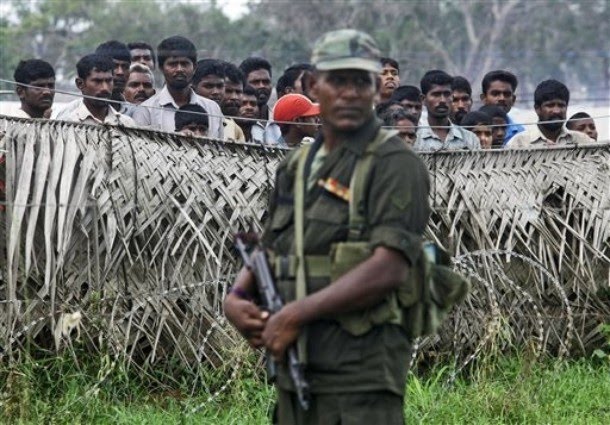

To my mind this stagnation is a result of the clash of two interests.
One relates to security and the other to human rights. Understandably,
with bitter memories of the ravages caused by the LTTE insurrection, the
South gets worked up at the thought of reducing security camps in the
North, imagining from their armchairs that such a move would jeopardize
security, exposing the North to recapture by terrorist forces. In the
first place, terrorism in the North has been so much controlled on the
ground that its resurgence has become a far cry, as the Northern
Commander has declared recently. Secondly, there is enough crown lands
in the Peninsula to accommodate a perfect security regime without
compromising its legitimate objectives. On a recent trip through the
Peninsula, I noticed large stretches of abandoned land that was in use
when I was a Cadet in the Jaffna Kachcheri in 1957.
Geneva Resolution being implemented – Mangala

Foreign Minister Mangala Samaraweera on Monday assured that the the process implementing the Geneva Resolution was on track
Strongly denying a dispute within the ruling coalition over the process,
Minister Samaraweera stressed that President Maithripala Sirisena had
been consulted before the Government of Sri Lanka (GoSL) co-sponsored
the Resolution at the Sept/Oct, 2015 sessions of the UNHRC in Geneva.
The Matara District MP vowed to proceed with the process regardless of
resistance by hostile elements hell-bent on sabotaging the peace
initiative.
Foreign Minister Samaraweera Monday evening called a special session
with the media, including members of the Foreign Correspondents
Association to explain the measures taken by the government to address
accountability issues. Having explained the circumstances under which
the GoSL had reached agreement on Resolution 30/1, Minister Samaraweera
declared the agreement as Sri Lanka’s biggest achievement recently.
Minister Samaraweera revealed that at the time the issue had been taken
up at the Geneva-based United Nations Human Rights Council (UNHRC), he
had been with President Maithripala Sirisena in New York. Foreign
Minister Samaraweera said that he had been able to obtain the
president’s advice, comfortably while Prime Minister Ranil
Wickremesinghe coordinated with Colombo-based diplomats involved in the
process.
Acknowledging the government’s failure to include a recommendation made
by the JVP relevant to the Office on Missing Persons (Establishment,
Administration and Discharge of Functions) Bill when it was presented to
parliament on Aug. 23, 2016, Minister Samaraweera said that it would be
accommodated to enable the process to go ahead.
Minister Samaraweera said that the Constitutional Council would soon
recommend to President Maithripala Sirisena seven members to the Office
of Missing Persons (OMP). In an obvious reference to recent media
reports pertaining to the appointment of Mano Tittawella as the
Secretary to the OMP, Minister Samaraweera insisted that a Secretary
hadn’t been appointed to the proposed office.
Declaring that the Sirisena-Wickremesinghe administration wouldn’t do
anything inimical to Sri Lanka’s interests, Minister Samaraweera
insisted that the Geneva Resolution co-sponsored by the GoSL wasn’t
meant to establish a hybrid court as propagated by various interested
parties. Responding to a query by the media, Minister Samarasinghe said
that foreign judges wouldn’t be included in the proposed judicial
mechanism under any circumstances though the GoSL could secure the
services of foreign experts. Minister Samaraweera said that hybrid
courts had been set up in some countries where the UN intervened.
Asked by The Island whether he could shed light on Jaffna District
Parliamentarian M.A. Sumanthiran on behalf of the Tamil National
Alliance (TNA) declaring in Washington on June 14, 2016 that Geneva
resolution 30/1 was subject to Sri Lanka agreeing to accommodate foreign
judges on a local judicial mechanism, Minister Samaraweera claimed that
he wasn’t aware of the said meeting. The Island pointed out that MP
Sumanthiran made the statement before the ‘Congressional Caucus for
Ethnic and Religious Freedom in Sri Lanka’ in the presence of Sri
Lanka’s Ambassador in Washington Prasad Kariyawasam.
Minister Samaraweera declined to indicate when the judicial mechanism would be ready or the members of the body.
Minister Samaraweera pointed out that the Paranagama Commission tasked
to inquire into accountability issues, too, received the backing for
foreign experts from several countries, including UK, Canada and
Australia. However, the GoSL was committed to ensure credible and
transparent process as requested by those affected by violence as well
as the international community.
Minister Samaraweera alleged that those who had accused the government
of betraying the war winning armed forces caused irreparable damage to
their reputation. Their relentless objections meant that they believed
the accusations directed at the military, therefore feared credible and
transparent investigations, Minister Samaraweera said.
Referring to varying figures mentioned by different parties, including
the ICRC in respect of the total number of disappearances reported
during the conflict, Minister Samaraweera said that the proposed OMP
would undertake a comprehensive inquiry in this regard. Emphasizing that
the country couldn’t further delay an inquiry, Minister Samaraweera
recalled how he teamed up with the then Opposition MP Mahinda Rajapaksa
during the second JVP inspired insurgency in the late 80s to represent
the interests of the families of the disappeared. "We set up Mothers’
Front to pursue inquiries into disappearances," Minister Samaraweera
said.
Samaraweera quoted MP Mahinda Rajapaksa as having said that he was ready
not only to take their cases to Geneva but go to Apaya (hell). Minister
Samaraweera said that now there was no requirement to go to hell as the
government had settled the issue. Inquiries could be conducted here,
Minister Samaraweera said.
The Minister alleged that the wartime Defence Secretary (Gotabhaya
Rajapaksa) had facilitated about 200 hardcore LTTE cadres to secretly
leave the country in the last week of the military offensive. The armed
forces brought the war to a successful conclusion on May 19, 2009.
In addition to the OMP and the proposed judicial mechanism, Samaraweera
also explained government efforts to finalise Draft Bill on the Truth
Commission by October and present it to parliament before the budget on
Nov. 10. "If we fail to do that, we will bring it to Parliament in
January.".
Enforced Disappearances: Curse in the Killings Field

Enforced disappearances and extrajudicial killings continue unabated in Balochistan – Voice for Baloch Missing Persons (VBMP)
 (August 30 , 2016, Balochistan, Sri Lanka Guardian) “The 30th of
August is marked internationally as Enforced Disappearance day but in
Balochistan, the blatant violation of human rights, extrajudicial
killings and enforced disappearances of Baloch are continuing at the
hands of the state agencies.” the statement issued by the VBMP has
noted.
(August 30 , 2016, Balochistan, Sri Lanka Guardian) “The 30th of
August is marked internationally as Enforced Disappearance day but in
Balochistan, the blatant violation of human rights, extrajudicial
killings and enforced disappearances of Baloch are continuing at the
hands of the state agencies.” the statement issued by the VBMP has
noted.
The state institutions and politicians justify their blatant human
rights violations under the pretence of Pakistani patriotism; despite
the obvious oppression and extreme deprivation imposed upon the Baloch
society by this state.
Balochistan’s home minister (Sarfraz Bugti) admitted that more than
13500 people have been arrested in Balochistan during a period of the
first half year; through National Action Plan. But state officials are
unable to provide details or whereabouts of the “arrested” people, even
the relatives of the victims are unaware of the fate of their forcibly
disappeared beloved.
The arrested people are often killed in staged encounters and are
falsely declared to be terrorists. On August 13, 2016, the dead bodies
of Gazain Baloch and Salman Qambrani were found dumped in Balochistan.
The last time they were seen alive was when they were arrested a year
earlier on July 7, 2015, at their residence situated on Qambrani Road in
Quetta. At that time, their relatives had gone to the area police
station to register First Information Report (FIR) regarding their
abducted loved ones. Although Gazain Baloch and Salman Qambrani were
picked up by state institutes along with Frontier Corps and other forces
in broad day light; before the eyes of hundreds of citizens. The police
outright refused to file the FIR. Then the aggrieved people contacted
the Human Rights Commission of Pakistan (HRCP),
International Commission of Jurists (ICJ) and the Voice for Baloch
Missing Persons (VBMP) and registered details with them for assistance
in the safe recovery of the enforced disappeared Gazain Baloch and
Salman Qambrani. Sadly such examples exist abundantly in Balochistan.
The Voice for Baloch Missing Persons repeatedly received complaints by
effected families that torture is routinely used to coerce confessional
statements from the detainees. One such example is the confession
statements of Abdul Bari Nichari. The relatives of Abdul Bari Nichari
communicated that he was arrested by police on October 19, 2015, after a
quarrel with his cousins and put in lockup at a police station.
Afterwards, the involved parties resolved their conflicts and he was
released. Astonishingly, in a video aired by the provincial government,
Mr Nichari is seen confessing about a bomb blast in the local bus which
occurred on October 19, 2015. It’s absurd to think that a person who was
arrested on October 19, 2015, and in the custody of the police could
have detonated a bomb blast on a bus the same day.
This and other such incidents raise serious questions about the
transparency and authenticity of confessional statements extracted from
detained people by government officials. The organisation VBMP already
challenged the authenticity of confessional statements from detainees,
but now the evidence has validated those concerns. The organisation by
this time revealed that enforced disappeared people are charged in
fraudulent cases, and they are also being killed in fake encounters.
Most often their bodies show marks inflicted by extreme acts of torture.
Afterwards, the victims are falsely declared as terrorists. But the
state institute’s trickeries have been publicly exposed.
Regrettably, no government institute and the judiciary are intervening
in the ongoing inhuman activities in Balochistan, nor has the
international community given sufficient attentions to atrocities on
Baloch. Here in Balochistan, the media has also failed to fully portray
the real picture. Hence all these factors give the state forces full
impunity to commit human rights abuses and enforced disappearances.
The organisation Voice for Baloch Missing Persons often receives
complaints from victim families that they are being harassed by state
forces to withdraw from their struggle for safe recovery of enforced
disappeared persons. The organisation condemns the inhuman acts of
government institutes and demands for judicial rights and due legal
process for all including Baloch missing persons because the national
and international laws guarantee human rights to citizens without any
discrimination.
In the accordance of 30th August International Day for
Enforced Disappearance, the organization Voice for Baloch Missing
Persons (VBMP) once again invites attentions of political parties, human
rights organizations, the justice providing bodies and urges the
international community with United Nation to play their due role to
investigate the catastrophic human rights abuses in Balochistan and
reject Pakistan’s illegal practice of enforced disappearances.
Protest against disappearances
 2016-08-30
2016-08-30
The Collective of kith and kin of those who went missing launched a protest at Liptons Circus today and demanded lasting measures to prevent incidents of disappearances. The protest was held to mark International Day of the Disappeared. Pix by Damith Wickramsinghe
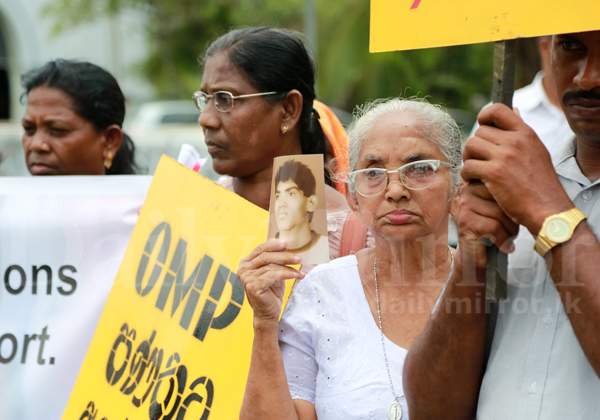
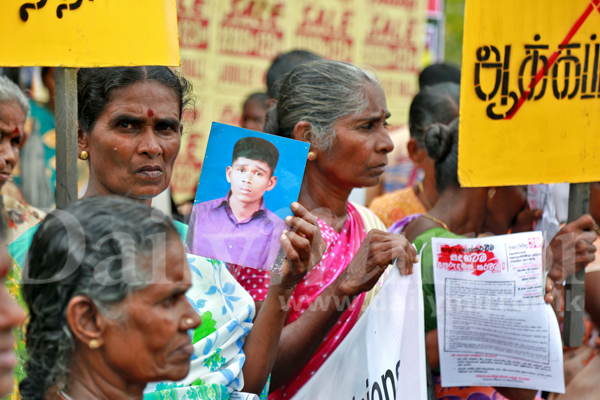
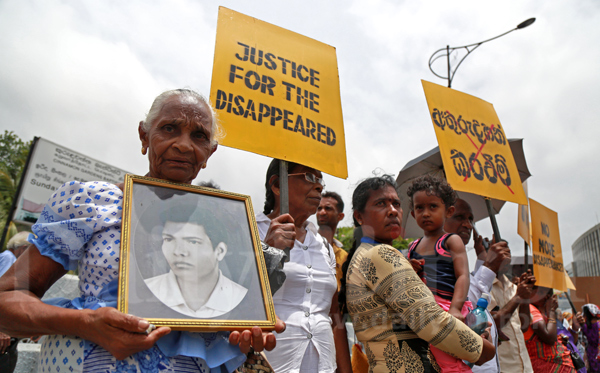
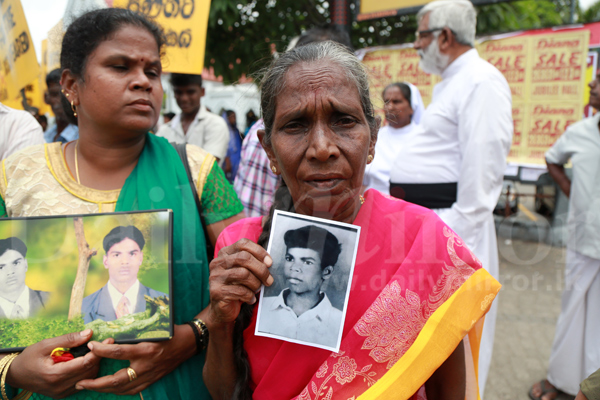
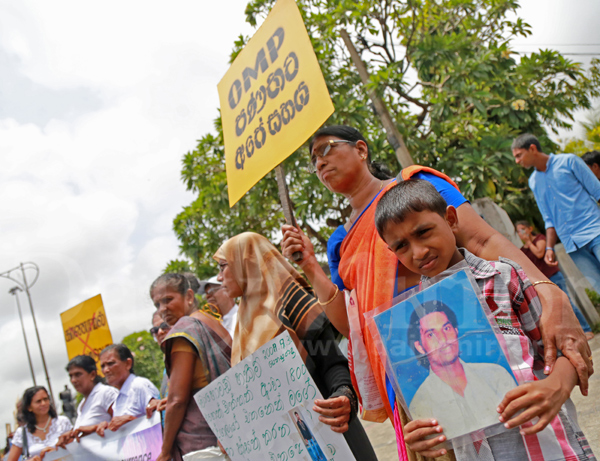
 2016-08-30
2016-08-30The Collective of kith and kin of those who went missing launched a protest at Liptons Circus today and demanded lasting measures to prevent incidents of disappearances. The protest was held to mark International Day of the Disappeared. Pix by Damith Wickramsinghe





Searching for Answers: The Road to the OMP
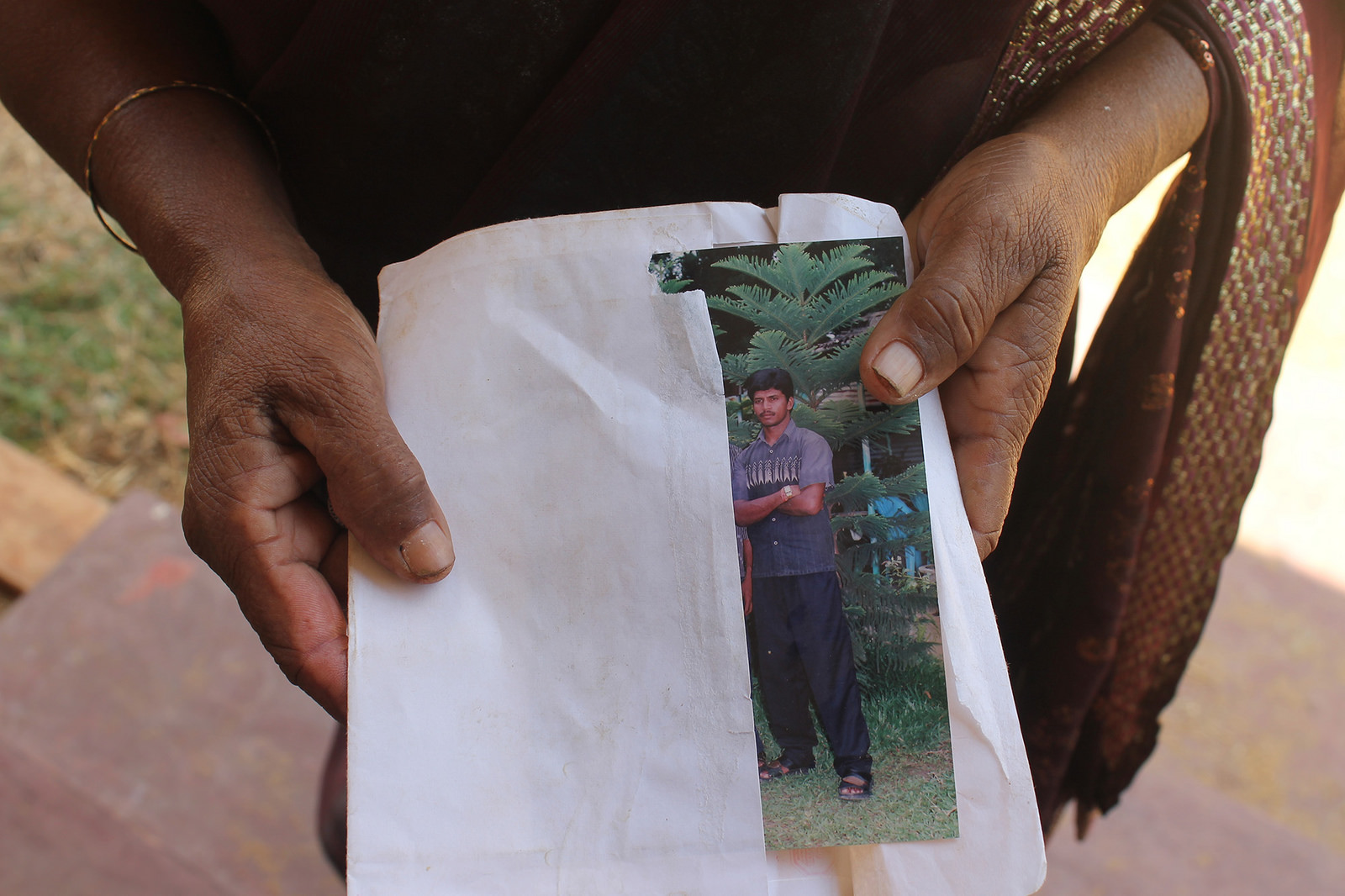
Featured image courtesy VikalpaSL
RAISA WICKREMATUNGE on 08/30/2016
August 30 is the International Day of the Victims of Enforced Disappearances.
This year has seen the passage of legislation to enable the set-up of an
Office of Missing Persons (OMP). While the passage of the OMP Act is a
step forward in terms of transitional justice, it was a long and arduous
journey to get here.
There have been numerous Commissions set up in the past to investigate
into the missing, but the process has been beset with delays, and many
continue to wait for answers.
It was perhaps fitting that the Parliamentary debate leading to the OMP
Bill being passed was itself disrupted, with Foreign Minister
Samaraweera being surrounded by supporters in order to ensure that he
could finish giving his speech.
While setting up the OMP might seem like a positive step, there were
several pitfalls. Rights organisations have flagged the lack of public
consultations leading up to the Bill being presented in Parliament. As a
result there has been some mistrust on the part of the missing, who
have themselves come before many Commissions to present their story –
with little to no results.
There was also a deliberate campaign to block the passage of the Bill,
with former President Mahinda Rajapakse saying that those who supported
it would ‘betray the armed forces of the country.’ In an attempt to
counter the confusion and misinformation, Groundviews alsointerviewed several people on the consultation process, earlier in the month.
PRAGEETH EKNALIGODA ABDUCTION: MILITARY INTELLIGENCE INVOLVED – ASG
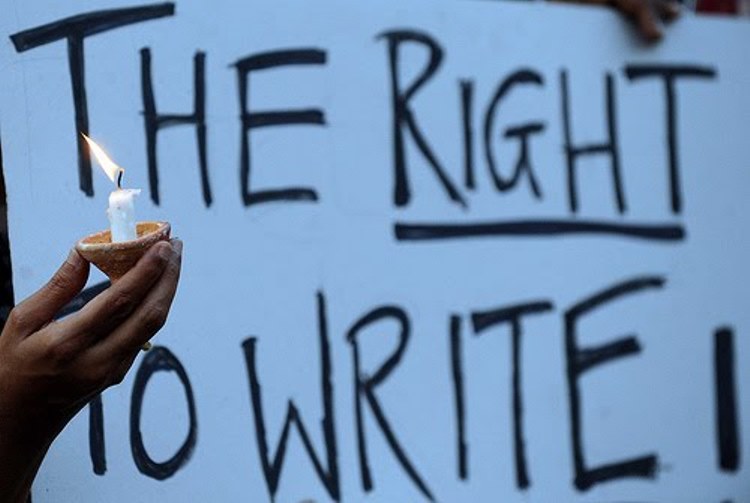
Additional Solicitor General (ASG) Sarath Jayamanne told the Supreme
Court (SC) that he had evidence to prove that Prageeth Ekneligoda was
abducted by intelligence officers of the military. Further he said that
he would take full responsibility for what he had said. Mr. Sarath
Jayamanne stated his position when providing answers to the petition
filed by the two intelligence officers now in custody in relation tot
the abduction on 29th Aug 2016.
This was reported by the Ceylon Today:
Jayamanne revealed this before Bench comprising Chief Justice Sripavan
and Justices Sisira Abrew and Upali Abeyratne, when providing answers to
the petition filed by the two intelligence officers now in custody.
The petitions had been filed by W.G. N. Upasena and Lance Corporal
Rupasena. The petitioners had alleged, in their petition, that they have
no connection with the Ekneligoda episode and they had been held in
custody without any reason for nearly a year, whereby their fundamental
rights had been violated.
When President’s Counsel Manoharan de Silva, who appeared on behalf of
the petitioners, made the submissions, the Additional Solicitor General
explained to Court thus: “The Police of Sri Lanka could not find a
single clue regarding the abduction of Ekneligoda, committed six years
ago. It is only after the change of the regime that it became possible.
“What a crime it is when it is comitted by the intelligence division,
which should instead be there to gather information to provide security
to this country. “Morali Sumedhiran had met Ekneligoda. He had an
identity card given by the LTTE. There was also a book with him with
phone numbers, which indicated that he surrendered to the forces after
the war. In that book there were phone numbers of very important persons
in this country.
“Ekneligoda owned a land at Habarana. Along with Morali, and
another individual, by the name of Nathan had gone in a three-wheeler
to that land to meet Ekneligoda. It is the petitioner who drove the
three-wheeler and on that occasion they have had discussions regarding
the politicos, when Pradeep had severely castigated the politicos. There
is recorded evidence of these, and those were recorded by the two
visitors to the land.
“After that incident, Morali had said that his brother Nathan was coming
to Colombo and had requested Ekneligoda to help him. These two
individuals who went to the Rajagiriya office of Ekneligoda, after
talking with Ekneligoda for a short while left the office along with
Ekneligoda. When they came out there was another group outside. They
blindfolded Ekneligoda and took him with them in a vehicle. He was taken
to the Girithale Army camp. There, Pradeep was shown photos of many
VIPs in the country and questioned.
“At that time Pradeep was in charge of the election campaign of Sarath
Fonseka who was a presidential candidate. Evidence has surfaced that the
cause of the abduction was a cartoon drawn by Pradeep,” the Additional
Solicitor General said.
Sarath Jayamanne along with Senior State Counsel Dileepa Peiris appeared on behalf of the Attroney General.
Sarath Jayamanne along with Senior State Counsel Dileepa Peiris appeared on behalf of the Attroney General.
Manoharan De Silva, PC, appeared on behalf of the petitioners.
Lawyers Sulakshana Senanayake, Hewamanne , Upul Kumaraperuma and senior
lawyer J.C. Weliamuna instructed by Sanjeewa Kaluarachi appeared on
behalf of Sandya Ekneligoda.
By Stanley Samarasinghe
President says no to break civil liberties of Muslims

One
security staff personnel, a head of a security force had brought in a
proposal at a crucial security staff meeting the other day to ban the
Muslim women wearing the ‘Burka”. To this proposal president Maithripala
Sirisena had not agreed.
This proposal had been brought forward with the clear intention to
prevent the ISIS Islam principles in cultivating roots for Islamic
terror. When the proposal was put forward the President had asked
whether there had been any clues identified in regard to this attempt.
However there had been only two instances of involving the “Burka” that
have been reported. One instance had been when a husband had come
disguised wearing a “Burka”while returning from the Katunayake
International airport to surprise his wife and the other instance was
when thieves had entered a bank in Kandy area to rob the bank.
The President had added that some European countries are making attempts
to ban the “Burka” but it cannot be allowed here as in such a
background like what had happened in the past era when the religious
conflicts and clashes took place, such repetition of events would take
place.
The President had emphasized that there no reports from the intelligence
services that ISIS terrorist organization is having links and is a
target in this country. Hence in these contexts there is no necessity to
raise alarms and in such a proposal to ban the “Burka” in this country.
However the President had stated that not to listen to certain
extremist persons in some organisations on this matter.
This view of the President was endorsed by the Prime Minister Ranil
Wickremasinghe and the Minister of Foreign Affairs Mangala Samaraweera.
“உதயன்“ மீதான தாக்குதலுக்கு டக்ளஸே பொறுப்பு! ஈ.பி.டி.பி .யின் உறுப்பினர் ஆதாரத்துடன் தெரிவிப்பு


உதயன் பத்திரிகை, தினமுரசு வாரமலரின் ஆசிரியர் அற்புதன் நடராஜன் மற்றும்
மகேஸ்வரி உட்பட யாழில் நடைபெற்ற முக்கிய கொலைகளுடன் ஈழ மக்கள்
ஜனநாயகட்சியின் தலைவர் டக்ளஸ் தேவானந்தா உள்ளிட்ட பல உறுப்பினர்கள்
சம்பந்தப்பட்டுள்ளதாக, ஈழ மக்கள் ஜனநாயக கட்சியின் நீண்டகால உறுப்பினர்
சு.பொன்னையா குறிப்பிட்டுள்ளார்
.
யாழ்.ஊடக அமையத்தில் இன்று (திங்கட்கிழமை) நடைபெற்ற பத்திரிகையாளர்
சந்திப்பின் போதே அவர் இவ்வாறு ஆதாரங்களுடன் குற்றச்சாட்டுக்களை
முன்வைத்தார். தொடர்ந்து குறிப்பிட்ட அவர்,
‘அரசாங்கத்துடன் இணைந்து வெள்ளைவான் கடத்தல் உள்ளிட்ட பல விடயங்களை
செய்தவர்கள் ஈழ மக்கள் ஜனநாயக கட்சியினரே. உதயன் பத்திரிகை தாக்குதலின்போது
அங்கு இருந்தேன். அந்த தாக்குதலை இராணுவத்தினரும் உடனிருந்தே செய்தார்கள்.
சாள்ஸ் என்பவேர வெள்ளை வான் கடத்தல்கள் உள்ளிட்ட பல கொலைகளுக்கு பிரதானமாக
இருந்தவர். நெடுந்தீவில் அரச உத்தியோகத்தர் நீக்கிலஸ் கொலைகள் பற்றியும்
பொலி ஸாருக்கு அறியப்படுத்தினேன். ஆனால், பொலிஸார் எந்த நடவடிக்கையும்
மேற்கொ ள்ள வில்லை.
ஊடகவியலாளர் நிமலராஜன் படுகொலை சம்பவத்துடன் தொடர்புடைய ஒரு சிலர்
யாழ்ப்பாணத்தில் தற்போதும் இருக்கின்றார்கள். சிலர் வெளிநாடுகளில்
இருக்கின்றார்கள். இந்த அரசாங்கம் கொலைச் சம்பவத்துடன் தொடர்படையவர்களை
கைதுசெய்தால், மேலும் உண்மைகளை அறிய முடியும்.
இந்த தாக்குதலின் போது காயமடைந்த ராஜன் மற்றும் திவாகரன் ஆகியோரை பலாலி
வைத்தியசாலையில் சிகிச்சைக்காக அனுமதித்தனர். அவர்கள் தற்போதும் உயிருடன்
இருக்கின்றார்கள். உதயன் பத்திரிகை மீது தாக்குதல் மேற்கொண்டவர்களும்,
தாக்குதலை தூண்டியவர்களும் யாழ்ப்பாணத்தில் தான் தற்போதும்
இருக்கின்றார்கள்.
நெல்லியடி, புங்குடுதீவு, காரைநகர், யாழ்ப்பாணம, வவுனியா உள்ளிட்ட
பகுதிகளில் நடைபெற்ற கொலைகள் மற்றும் வெள்ளைவான் கடத்தல்களுக்கு முக்கிய
காரணமானவர்கள் ஈழ மக்கள் ஜனநாயக கட்சியினர் தான்.
மகேஸ்வரி உட்பட தினமுரசு பத்திரிகையின் ஆசிரியர் அற்புதராஜா உள்ளிட்டவர்களை
தனிப்பட்ட காரணத்தின் ஊடாக கொலை செய்தார்களே தவிர, விடுதலைப் புலிகள் கொலை
செய்யவில்லை.
தாங்கள் செய்த கொலையினை விடுதலைப்புலிகள் செய்தார்கள் என விடுதலைப்புலிகள்
மீது குற்றத்தினை சாட்டினார்கள் என்றும் அவர் பல திடுக்கிடும் உண்மைகளை
ஊடகவியலளர்களுக்கு வெளிப்படுத்தினார்.
Subscribe to:
Posts (Atom)



